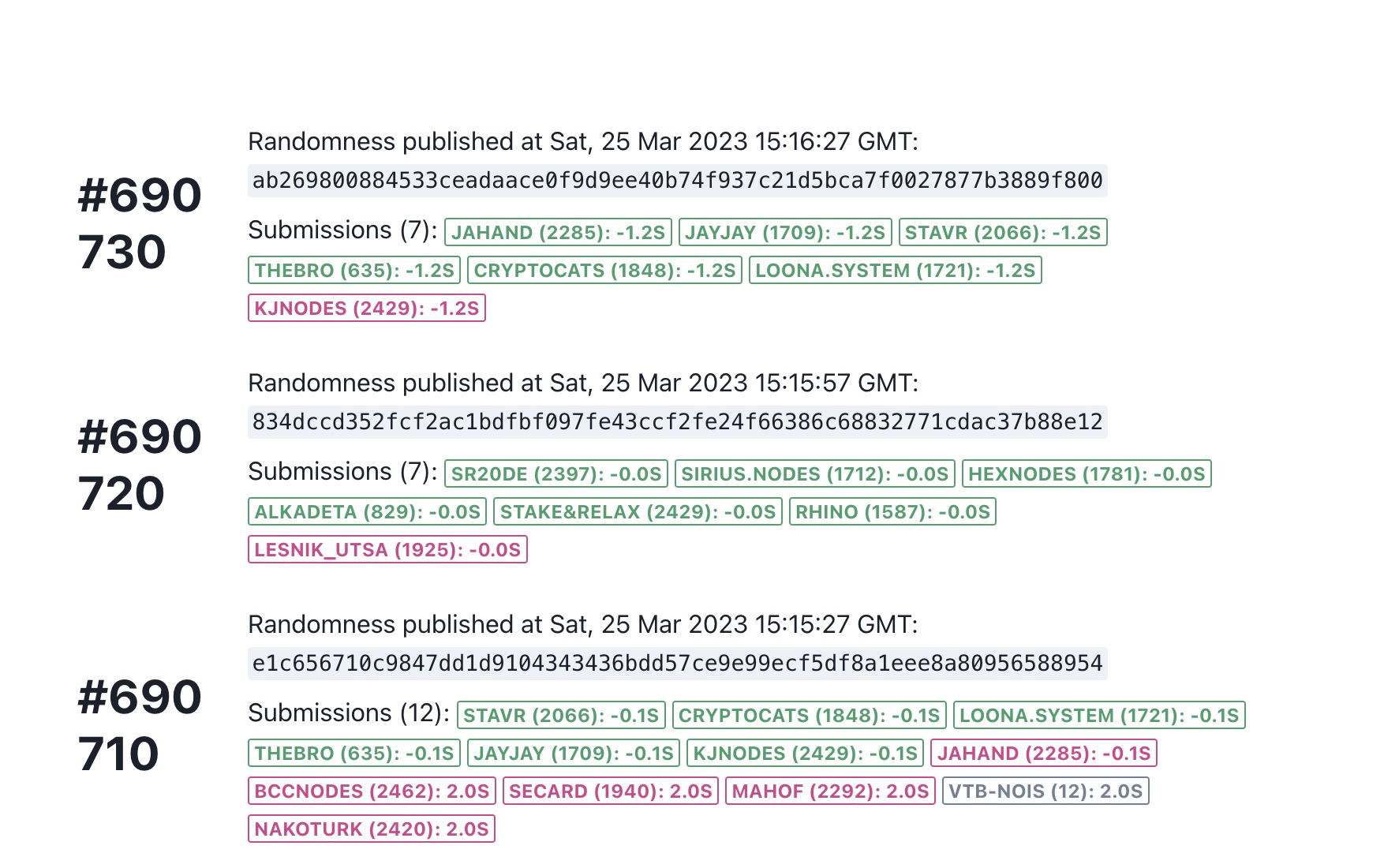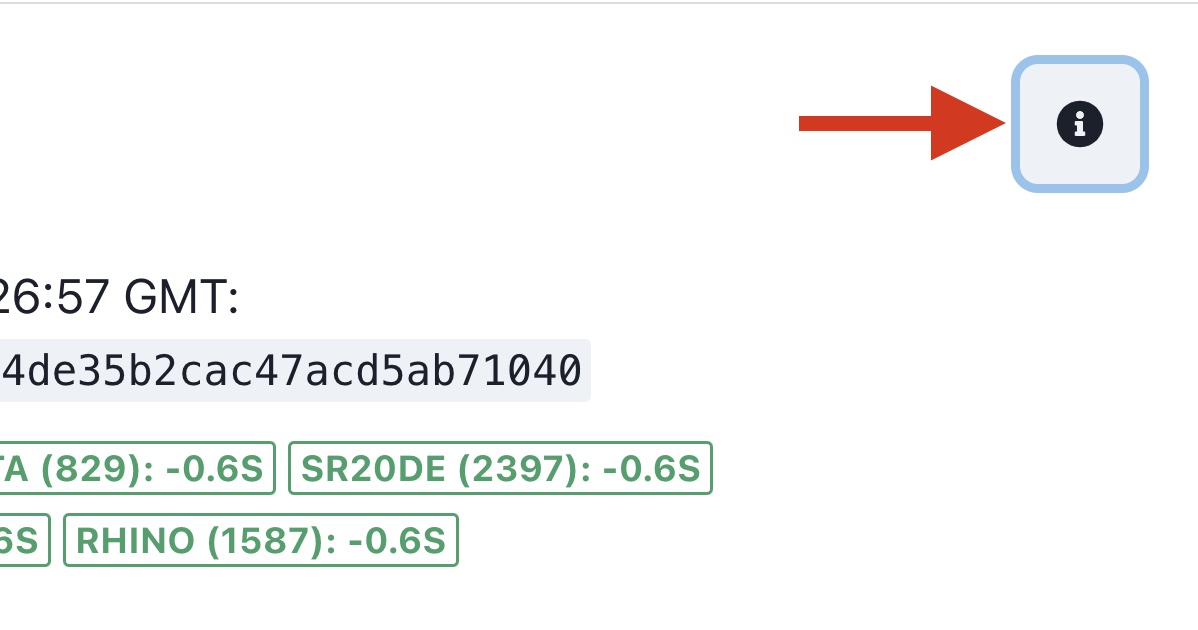Drand Bots
Introduction
Bots bring randomness from drand to the Nois blockchain. That's the only thing the bot does. Once that randomness is on chain, it will be offered to Dapps across IBC. Bots earn incentives from bringing drand rounds that have been requested by consumer dapps.
ℹ️ Drand-bots do not and cannot generate randomness nor can they bias it. They simply relay it from drand to the Nois chain.
ℹ️ Drand-bots are never slashed and do not need to put any collateral simply because they cannot cheat.
⚠️ Although drand-bots cannot impact the outcome of the randomness, they can impact the availability of the randomness by stopping to work or by failing to submit to the Nois chain. The chain needs at least one bot to function. This is why bot operators are incentivised and constitute a critical piece of Nois.
Running a Drand Bot
You can run the drand bot whether on the host or in docker. The setup instructions are in the README of this repository.
Performance Factors of Drand Bots
the main criteria in running a fast drand-bot is being able to broadcast your tx as fast as possible in order to reach the proposer's node asap before the other drand-bots. this will allow your submission tx to be placed among the first 6 bots in the mempool of the proposer's node. Obviously you need a good cpu and a fast connection that is very close to an rpc node. Your rpc node needs to be fast in the network and eventually needs to have fast direct peers so it can reach the proposer before the competitor drand-bot operators. Choosing an rpc node that is heavily used or that many other bot operators are using would not be optimal. Using an rpc that has big voting power can slightly increase your chances because that node gets chosen to propose blocks a bit more often than other validator nodes so sometimes you get that small advantage when your RPC is the block proposer. But this is a very small difference and often validator nodes do not offer an rpc endpoint. In general if you get like +3 second delay it is not because your bot submitted the tx 3 seconds later than the other drand-bots but because they were few ms before you so the proposer did not choose to select you in the proposed block because there is a consensus blockspace that only allows 4-5 submissions. so your submission becomes leftover for the next block (in 3 seconds) and if you also miss the second block because there are more than 10 operators faster than your drand-bot. then your submission only gets included in the block afterwards so +6seconds.
Check Submissions
In order to check the submissions you can visit this Nois randomness
dashboard
 This tools shows randomness that was
verified on the Nois blockchain. The source of randomness is drand, a
decentralized random number generator which produces a so called "random beacon"
every 3 seconds. Beacons are submitted as transaction to Nois by off-chain bots.
Since beacons are cryptographically signed by drand, bots cannot influence the
randomness. A strong and diverse set of bot operator makes the submission of
beacons fast and relyable. Bots are incentivised for submissions. They receive a
rewards if they are registered and allow-listed.
This tools shows randomness that was
verified on the Nois blockchain. The source of randomness is drand, a
decentralized random number generator which produces a so called "random beacon"
every 3 seconds. Beacons are submitted as transaction to Nois by off-chain bots.
Since beacons are cryptographically signed by drand, bots cannot influence the
randomness. A strong and diverse set of bot operator makes the submission of
beacons fast and relyable. Bots are incentivised for submissions. They receive a
rewards if they are registered and allow-listed.
| Badge Color | Description |
|---|---|
| Green | Bot received a reward |
| Red | Bot is registered but did not receive a reward |
| Gray | Bot is not eligible for a reward |
Check if your bot is allowlisted
- Navigate to the randomness dashboard
- On the top right of the page click on info

- Scroll down and check the allowlisted addresses
Incentive System
Drand bots earn incentives by submitting randomness to Nois. A bot gets an incentive if and only if They are among the fastest AND they are allowlisted AND The randomness round has been requested by a dapp